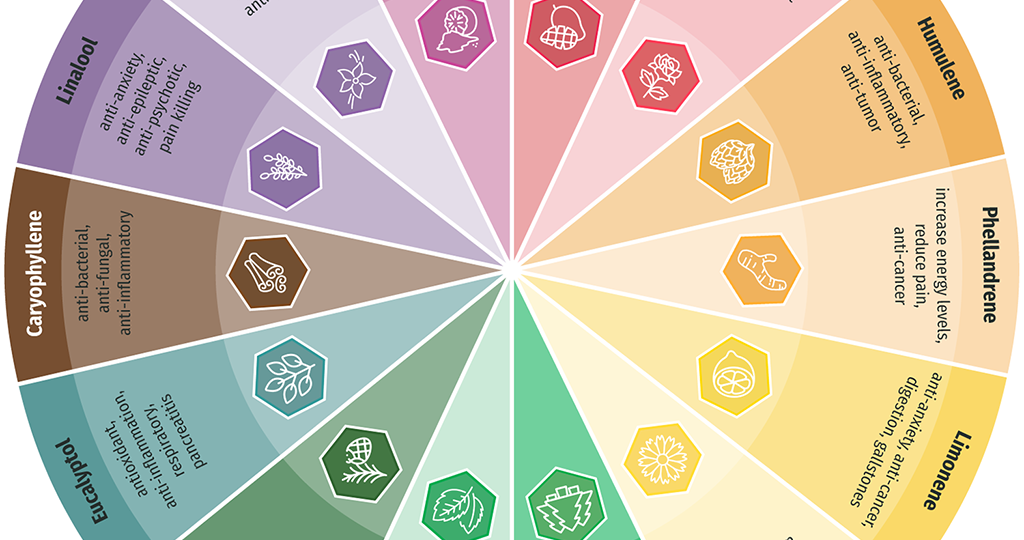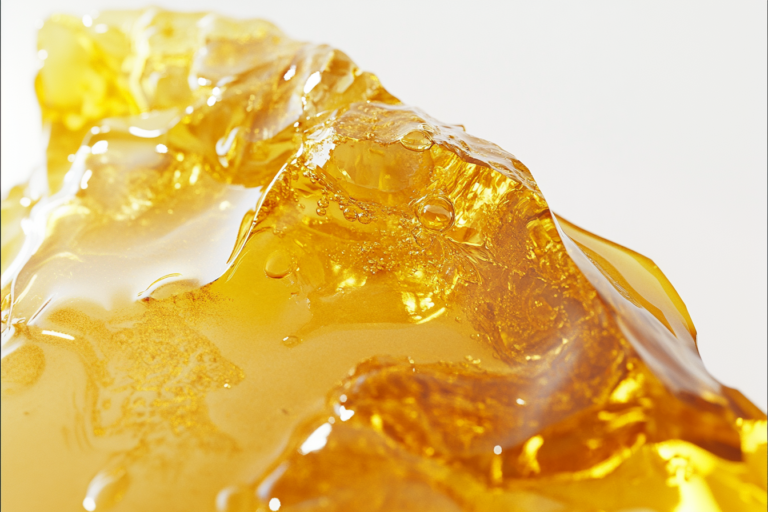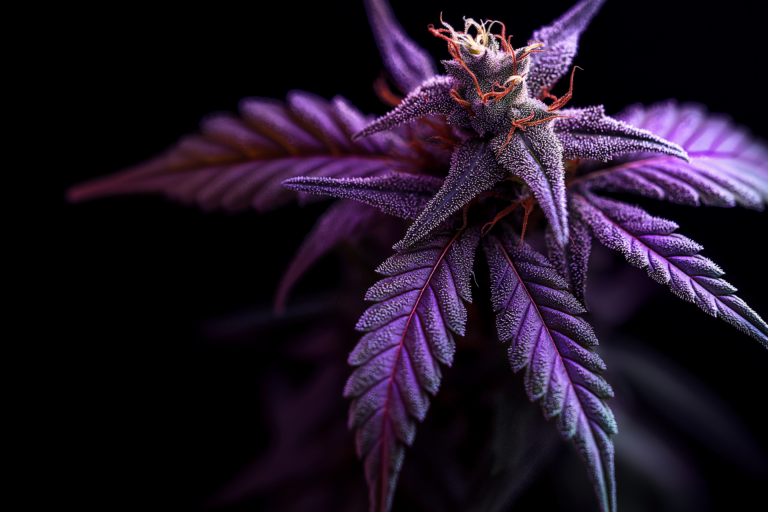Cannabis Sativa is most treasured for the immense, active, and euphoric high that it brings, so it is common amongst users who desire to up creativity, attention, and even mood. With a lot more in store than the usual, Sativa strains are more than just the customary THC and CBD that one usually associates with the cannabis plant. Terpenes are highly aromatic compounds derived from many plants, and they give out a wide variety of characteristic smells and even therapeutic effects for every strain. This paper will delve into the world of Sativa terpenes, focusing on some of the most common and how they potentially could be useful for wellness.
Terpene Descriptions:
Terpenes are volatile, aromatic molecules responsible for the distinct smell in plants, ranging from the citrus of lemons to the sharp, fresh scent of pine. In cannabis, they are located within the glands in the same place as cannabinoids such as THC and CBD; they give the plant its complex flavor and aromatic character.
How Terpenes Function in Plants and the Human Response to Them
In addition to sensory purposes, terpenes play a very important biological role in the plant by attracting pollinators and repelling predators. With respect to human beings, terpenes act directly on our body with effects on our mood, behavior, and health. Not only through their aroma, but terpenes can also act on brain function and health results, providing many therapy benefits.
The Entourage Effect: How Terpenes Interact With Cannabinoids
The entourage effect is a theory that cannabis compounds—both terpenes and cannabinoids—possess some kind of synergistic relationship with each other, potentiating the combined effects and therapeutic properties. This has a wide implication: health benefits from cannabis cannot be totally attributed to THC or CBD in isolation; terpenes play quite an important role in giving the overall experience.

What are some Common Sativa Terpenes?
Mycerine
- Description and aroma:
- Myrcene has a characteristic earthy, musky taste with some overripe fruit nuances. Myrcene is the most common terpene found in cannabis and is also found in high concentrations in mangoes, lemongrass, and thyme.
- Advantages
- Myrcene has been confirmed to contain sedative effects, thus it aids in sleep and muscle relaxation. It is also confirmed to contain mood-enhancing benefits that prove to be a big help for those who suffer from anxiety or depression.
Limonene
- Description and Smell:
- It is recognizable due to its citrus fragrance, part of the fresh smells of lemon, orange, and grapefruit. Limonene is the second most abundant terpene in cannabis and also found in the rinds of some citrus fruits.
- Advantages
- As one of the substances for stress reduction and mood improvement, limonene is also an antibacterial and antifungal substance. It is easy on digestion and has been analyzed for its use in cancer prevention and treatment.
Terpinolene
- Description and scent:
- Terpinolene is a complex terpene with notes best described as piney and floral, herbal, and even a little citrus. This makes it a less common scent in cannabis that is quite prominent in strains known for a fresh, uplifting profile. Terpinolene is also found in apples, cumin, and lilac, which allows them to have their unique smells.
- Advantages
- This multi-functional terpene is renowned for its antioxidant effects that help in the fight against oxidative stress and potentially in reducing some diseases. Terpinolene also displayed good potential in its sedative effects; hence, it became a valuable component for people who needed relaxation or help in falling asleep. Besides, its anticancer property is also being explored for applications in cancer chemoprevention strategies.
Pinene
- Description and scent:
- As its name would suggest, pinene exudes a strong aroma of pine, with undertones of the forest air’s freshness. It is also the most common terpene in the natural world, and it is abundant in conifers, pine trees, rosemary, basil, and parsley. In cannabis, pinene augments the sharp, refreshing qualities of certain Sativa strains. Advantages This means that pinene possesses a great therapeutic potential for increasing airflow and improving respiratory functions, as well as being beneficial for patients with asthma. It is helpful in patients with pain and inflammation, and it also has an unrivaled modulating impact on some of the cognitive effects of THC, like memory loss, by enhancing attentiveness and memory retention.
Caryophyllene
- Description and aroma:
- Caryophyllene is unique among terpenes because it also functions as a cannabinoid, capable of directly interacting with the body’s endocannabinoid system, particularly the CB2 receptor. It has a spicy, peppery aroma, contributing to the woody, spicy notes of some cannabis strains. Beyond cannabis, it’s found in black pepper, cloves, and cinnamon.
- Benefits:
- This terpene is known for its anti-inflammatory effects, offering relief from pain and inflammation without the psychoactive effects associated with other cannabinoids. Caryophyllene has also been studied for its potential in treating anxiety and depression, making it a multifaceted component for mental wellness. Additionally, its efficacy in treating ulcers and its promise in addiction treatment highlight its therapeutic versatility.
The Therapeutic Benefits of Sativa Terpenes
The terpenes found in Sativa strains of cannabis play a pivotal role in the plant’s therapeutic effects. While individual terpenes offer unique benefits, their real potential is unlocked through their synergistic interactions, enhancing the plant’s overall medicinal properties. This section explores the diverse therapeutic benefits these terpenes contribute to mental and physical health.
Enhancing mental health:
Sativa terpenes like limonene and caryophyllene have been recognized for their stress-relieving and antidepressant properties, providing a natural alternative for managing mental health conditions such as anxiety and depression. The uplifting and mood-enhancing effects of these terpenes can significantly improve quality of life, offering a sense of well-being and happiness.
Physical health benefits:
Beyond mental wellness, Sativa terpenes contribute to physical health in several ways. Myrcene and caryophyllene, with their anti-inflammatory and analgesic properties, can relieve pain and inflammation, making them useful for conditions like arthritis and fibromyalgia. Pinene’s ability to improve respiratory function is another boon, particularly for those with breathing difficulties.
Improving the quality of life:
The entourage effect of terpenes and cannabinoids in Sativa strains can lead to improved daily functioning and quality of life. Whether it’s enhancing creativity and focus, providing energy boosts, or aiding in relaxation and sleep, the right terpene profile can cater to a wide range of needs and preferences, tailoring the cannabis experience to individual wellness goals.
Choosing the Right Sativa Strain for You
Selecting the right Sativa strain involves understanding the terpene profiles that best match your desired effects. Consider whether you’re seeking relaxation, pain relief, mood enhancement, or another benefit. Consulting with knowledgeable staff at dispensaries like Nurse Wellness can provide insights into the terpene content of different strains, helping you make an informed decision. Remember, the goal is to find a strain that harmonizes with your body’s needs and lifestyle, optimizing your cannabis experience for wellness.




















